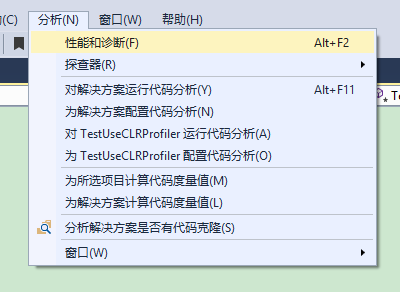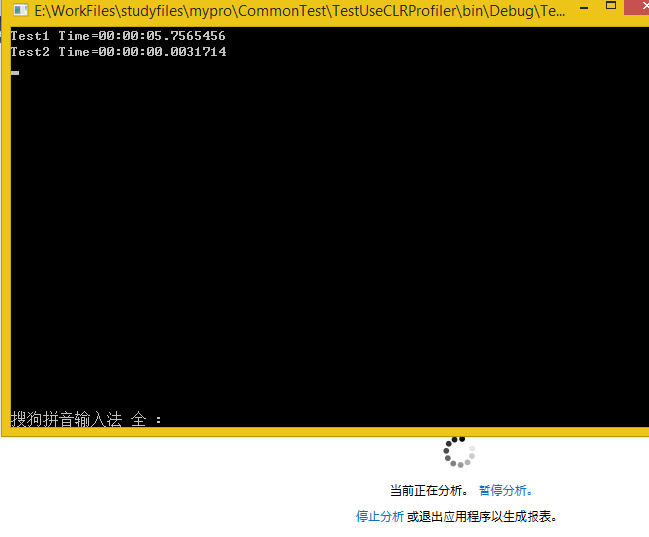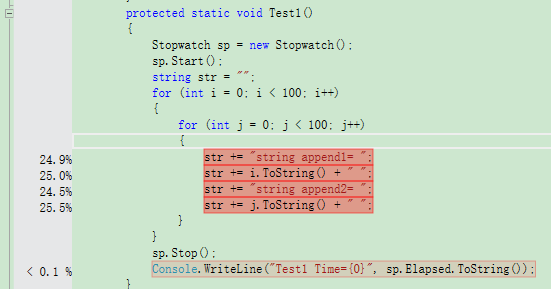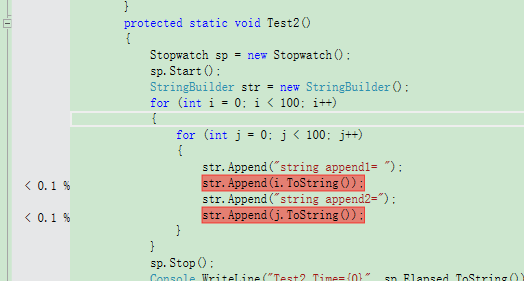visual studio是个强大的集成开发环境,内置了程序性能诊断工具。下面通过两段代码进行介绍。


static void Main( string[] args){Test1();Test2();Console.ReadKey();}protected static void Test1(){Stopwatch sp = new Stopwatch();sp.Start();string str = "" ;for (int i = 0; i < 100; i++){for (int j = 0; j < 100; j++){str += "string append1= " ;str += i.ToString() + " ";str += "string append2= " ;str += j.ToString() + " ";}}sp.Stop();Console.WriteLine("Test1 Time={0}" , sp.Elapsed.ToString());}protected static void Test2(){Stopwatch sp = new Stopwatch();sp.Start();StringBuilder str = new StringBuilder();for (int i = 0; i < 100; i++){for (int j = 0; j < 100; j++){str.Append( "string append1= " );str.Append(i.ToString());str.Append( "string append2=" );str.Append(j.ToString());}}sp.Stop();Console.WriteLine("Test2 Time={0}" , sp.Elapsed.ToString());}
先运行一下查看运行结果如下:
两个函数实现的功能都一样,实现方式不一样,效率却完全不一样,下面通过vs自带的性能分析工具进行分析,可以分析出程序对cpu使用率和内存使用情况等,
本次以cpu测试为例。
注:本次测试用的是vs2013,在vs2010里为启动性能向导。








从以上分析结果可以得出对函数内部具体代码的的cpu使用情况,由此在实际开发中,可以针对某个代码单独拿出进行分析,以找出消耗cpu的地方,
加以改进从而提高程序的效率。
性能诊断工具还有不少,如微软的CLR Profiler,还有WinDbg等,后续的博客会对这两个工具作介绍。

)








)




![[LeetCode]--71. Simplify Path](http://pic.xiahunao.cn/[LeetCode]--71. Simplify Path)



